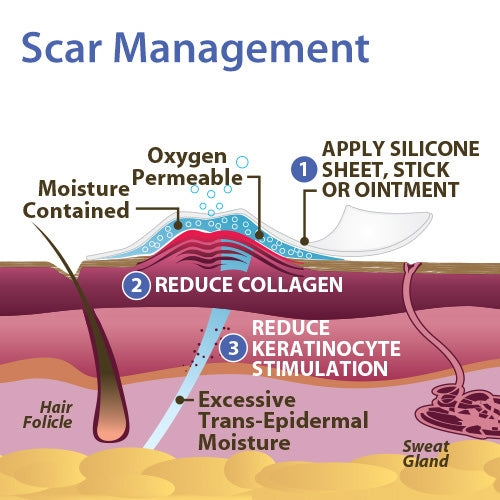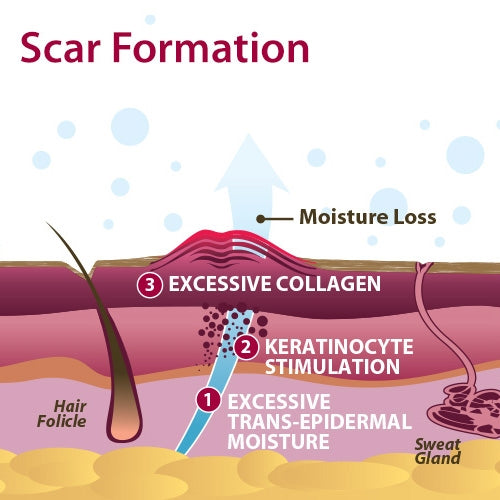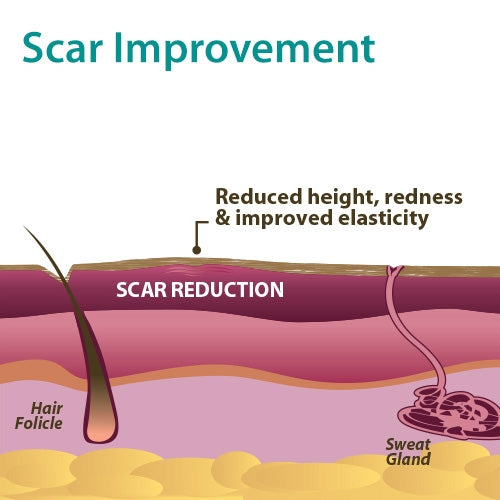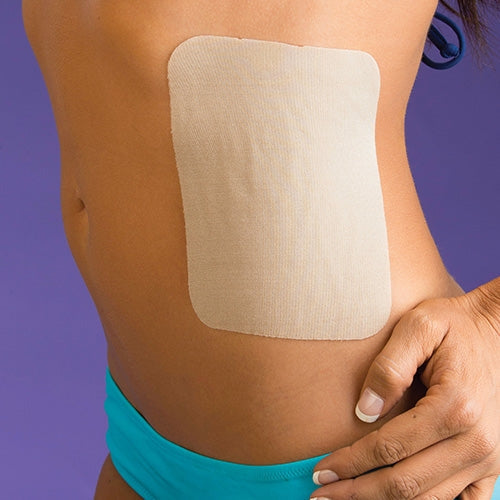Silicone Scar Sheets: What the Research Actually Shows
Why Doctors Keep Recommending These Products
For anyone who has experienced surgery or a bad injury, chances are your doctor mentioned silicone scar sheets. There's a good reason for this - they actually work, and we've got the studies to prove it. Back in 2013, O'Brien and Jones did a massive review looking at 30 different clinical trials. What they found was pretty impressive: these sheets made scars 86% more flexible and significantly improved how scars looked color-wise.
Here's what's interesting - when Stewart and Kim surveyed dermatologists in 2020, they found that 78% of skin specialists were using silicone products as their go-to treatment for problem scars. That's not because of marketing hype; it's because they see the results in their patients every day.
The thing about silicone sheets is they're not some new fad treatment. Doctors have been using them for decades, and the research keeps backing up what they see in practice. For thick, raised scars (the medical term is hypertrophic) and those stubborn keloid scars that seem to grow bigger than the original wound, silicone sheets are often the first thing dermatologists try.
How These Sheets Actually Work on Your Skin

So what's happening under that silicone patch? The silicone creates what researchers call an "occlusive barrier" - basically, it seals in moisture and makes your skin about 1-2 degrees warmer. Mustoe and his team figured this out back in 2002, and it turned out to be a game-changer for understanding scar treatment.
Your body normally goes overboard making collagen when you have a scar. That's what makes scars thick and raised. But when you keep the area moist and warm with silicone, your body dials back the collagen production by about 60%. The result? Flatter, softer scars that look more like normal skin.
There's also something happening at the cellular level that's pretty cool. When researchers looked at scar tissue under microscopes, they found that silicone treatment actually helps organize the collagen fibers in a more normal pattern. Momeni's group published a study in 2009 where they compared people using silicone sheets to those who didn't treat their scars at all. The silicone group had 47% thinner scars and 52% better texture scores.
The medical-grade silicone itself is the same stuff they use for implants and other medical devices. It's biocompatible, which means your body doesn't react to it like a foreign substance. This is why you can wear these sheets for hours without problems.
What Types of Scars Respond Best

Not all scars are created equal, and silicone sheets work better on some types than others. The real success stories come from treating hypertrophic and keloid scars - those are the thick, raised ones that form when your body produces too much collagen during healing.
When O'Brien and Jones did their big review in 2013, they looked at 1,648 patients across 30 different studies. For hypertrophic scars, they found response rates between 68% and 85%. That's pretty good odds if you're dealing with a problematic scar. Keloid scars are trickier - they're more resistant to treatment - but even then, 60-75% of patients saw their scars shrink and become less bothersome.
Post-surgical scars are another area where silicone sheets shine. Karagoz and his team compared silicone sheets to other topical treatments for burn scars and found that silicone came out ahead in every category they measured - scar height, how red the scar was, and how satisfied patients were with the results.
What's really interesting is the timing. If you start using silicone sheets within 2-3 weeks after your wound closes, you can actually prevent bad scarring from happening in the first place. The research shows that early intervention reduces the chances of developing problem scars by 40-60%.
The Right Way to Use Them (Based on data)
Getting good results with silicone sheets is not hard, but you do need to follow some basic rules. The biggest mistake people make is not cleaning their skin properly before applying the sheet. O'Brien and Jones found that poor skin prep increased irritation rates by 23%.
Here's what works: wash the scar area with regular soap and water, dry it completely, then cut the sheet to fit just your scar - don't let it overlap onto normal skin. Press it down firmly so there are no air bubbles underneath. The sheet needs to be on your scar for 12-24 hours every day, and studies show that longer wear time gives better results. People who wore their sheets 20-24 hours daily had 35% better outcomes than those who only wore them for 12 hours.
The treatment timeline is longer than most people expect. You need to use the sheets for at least 12 weeks to see real improvement, but many people need to go 24 weeks or longer. Momeni's research showed that 85% of the improvement happens in the first 12 weeks, but you keep getting gradual benefits through week 24.
If you have an old scar (more than a year), don't give up. These sheets can still help, but you might need to use them for 6-12 months. The possibility of reducing your scar drops to 60-70%, but that's still worth trying if the scar bothers you.
Safety and Side Effects (The Real Story)
One of the most appealing facts about silicone sheets is how safe they are. A scientific paper from Stewart and Kim looked at safety data from 2,847 patients and found that only 3.2% had any problems. Most of these were minor - some redness or itching that went away when they stopped using the sheets.
You shouldn't use these sheets on open wounds or infected areas. That might seem obvious, but some people try to jump the gun and start treatment too early. Wait until your wound is completely closed and healed over.
If you have sensitive skin or known allergies, you might want to test a small piece of the sheet on normal skin first. True silicone allergies are rare, but they do exist. Signs to watch out for include persistent redness, itching that doesn't reduce or go away completely, or any other kind of skin breakdown.
What the Numbers Actually Mean

Medical researchers evaluate scar treatments using established measurement systems. The Vancouver Scar Scale rates scars from 0 to 13 points, while the Patient and Observer Scar Assessment Scale spans 6 to 60 points. Following 12 weeks of silicone therapy, patients typically show a 4.2-point reduction on the Vancouver scale and a 3.8-point decrease on the POSAS scale.
But what does that mean in real terms? When they use ultrasound to measure scar thickness, silicone treatment typically reduces thickness by 40-60%. Biomechanical testing shows that scars become 50-85% more elastic.The results also show durability - subsequent studies reveal that the positive effects remain for 12 to 24 months after finishing treatment. Only 8-12% of people see their scars get worse again after stopping treatment, and most of those respond well to another round of silicone sheets.
Patient Satisfaction and Real-World Results
The clinical results are fine, but here's what really happens: when you ask people how they feel about their scars after treatment, most of them - we're talking 75 to 90 percent - say their situation got a lot better. They're not scratching at their scars constantly anymore. That tight, pulling sensation that bothered them? It's mostly gone. And they don't feel like they have to cover up or avoid certain clothes.
But here's the thing that surprised researchers: it's not just about how scars look. People actually move better. Their scars don't feel like they're pulling against their skin when they bend their arm or turn their neck. If you've got a scar that crosses over your shoulder or knee - anywhere you need to move a lot - this makes a huge difference in how you go about your day.
Bottom Line for Patients and Doctors
Silicone scar sheets won't work miracles, but they're hands down the best thing you can try without going under the knife. The studies back them up, they're safe as houses, and most people who stick with them see real improvements.
Doctors like them because they can recommend something that actually works without worrying about side effects or complications. Patients get a shot at better-looking scars without having to schedule surgery or deal with more intense treatments.
The catch? You need to be realistic about what they can do, and you absolutely have to use them every single day. If you're the type who can commit to wearing these things for months on end, you'll probably be happy with the results. But if you want instant gratification or you know you'll forget to put them on half the time, you might as well save your money and look into something else.
Where to Get Silicone Gel Sheets
Specialized retailers and online shops offer silicone gel sheets for scar care.
At Biodermis.com we supply a wide range of products for scar treatment. A 2020 survey ranked silicone products as the first-line treatment for hypertrophic and keloid scars in dermatology practice (Stewart and Kim, 2020). Many specialists trust these products to help manage different types of scars.
To find a wide range of high-quality silicone gel sheets, feel free to visit our Epi-Derm collection page, where we offer various shapes of silicone sheets relevant for different types of scars.
The Research That Backs This Up
Mustoe TA, Cooter RD, Gold MH, et al. International clinical recommendations on scar management. Plastic and Reconstructive Surgery. 2002;110(2):560–571.
O’Brien L, Jones DJ. Silicone gel sheeting for preventing and treating hypertrophic and keloid scars. Cochrane Database Syst Rev. 2013;(9):CD003826.
Momeni A, Tompkins J, Bannasch H, Stark GB. Comparison between silicone gel sheets and silicone gel for the treatment of hypertrophic and keloid scars. Journal of Burn Care & Research. 2009;30(3):464–467.
Karagoz H, Yuksel F, Ulkur E, Evinc R. Comparison of efficacy of silicone gel, silicone gel sheet and topical onion extract in the treatment of postburn hypertrophic scars. Burns. 2009;35(8):1097–1103.
Stewart DH, Kim ED. Scar Management. In: UpToDate. Wolters Kluwer; 2020.




